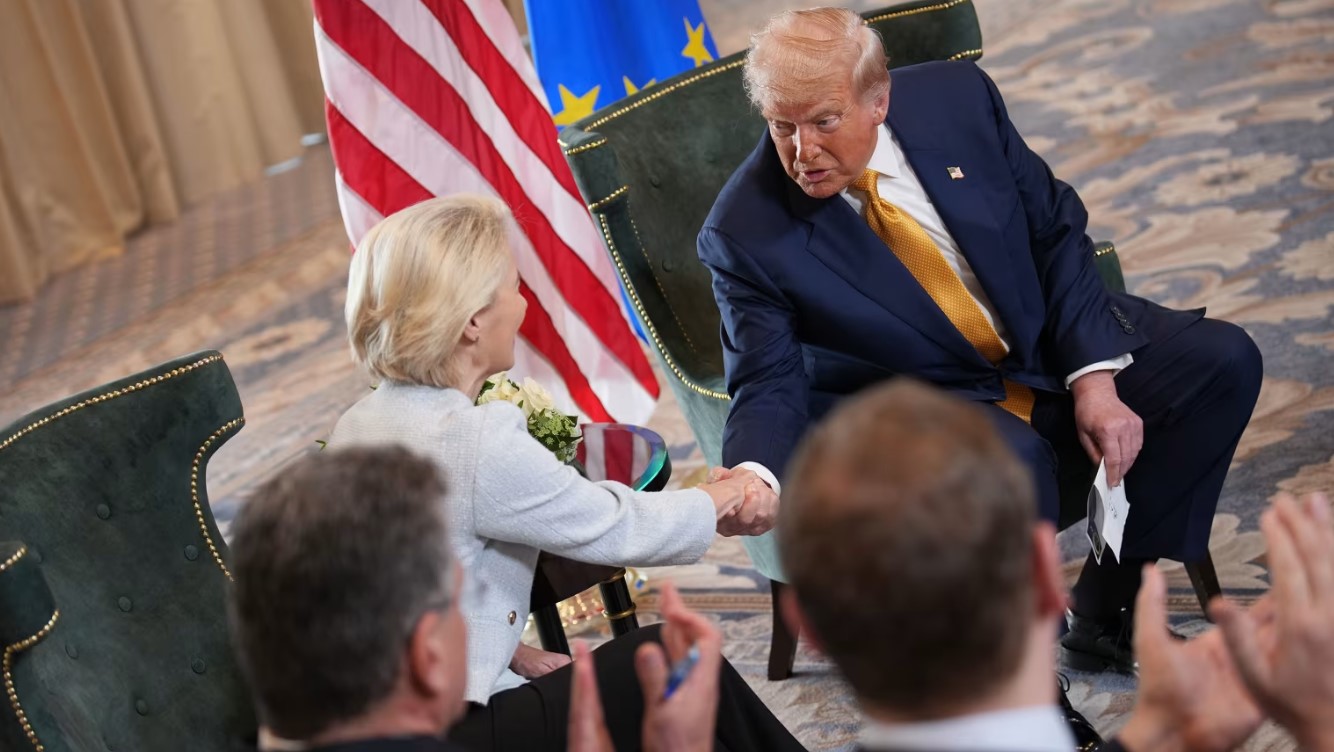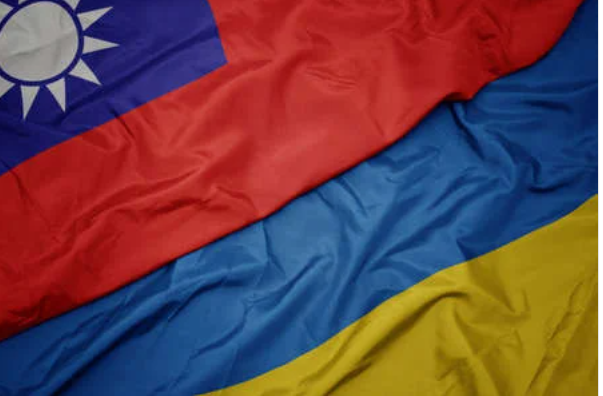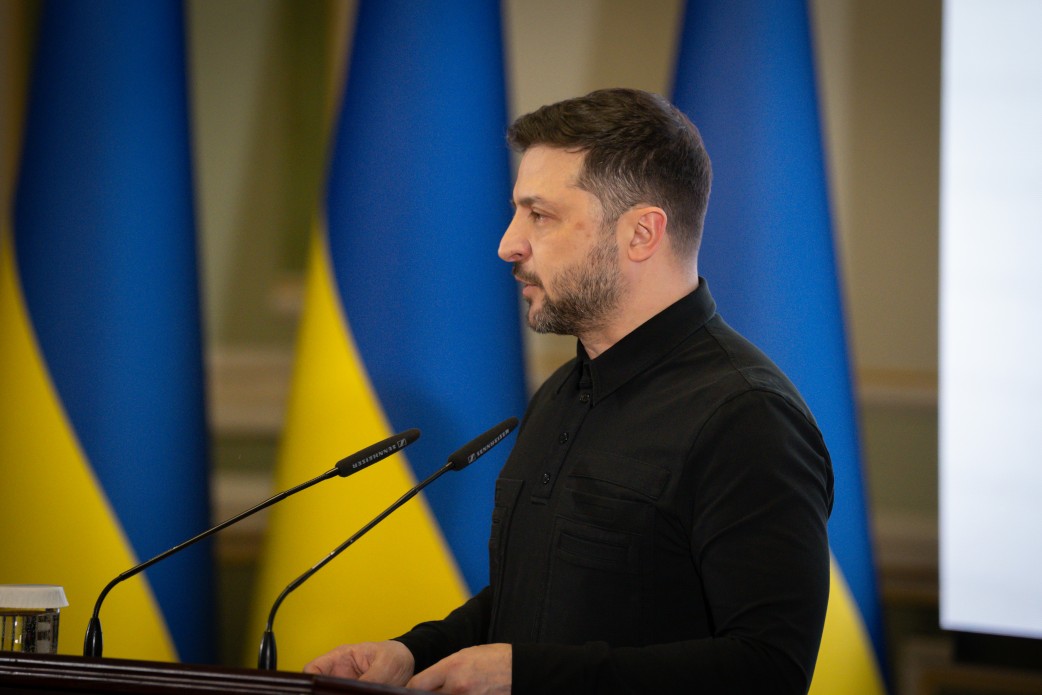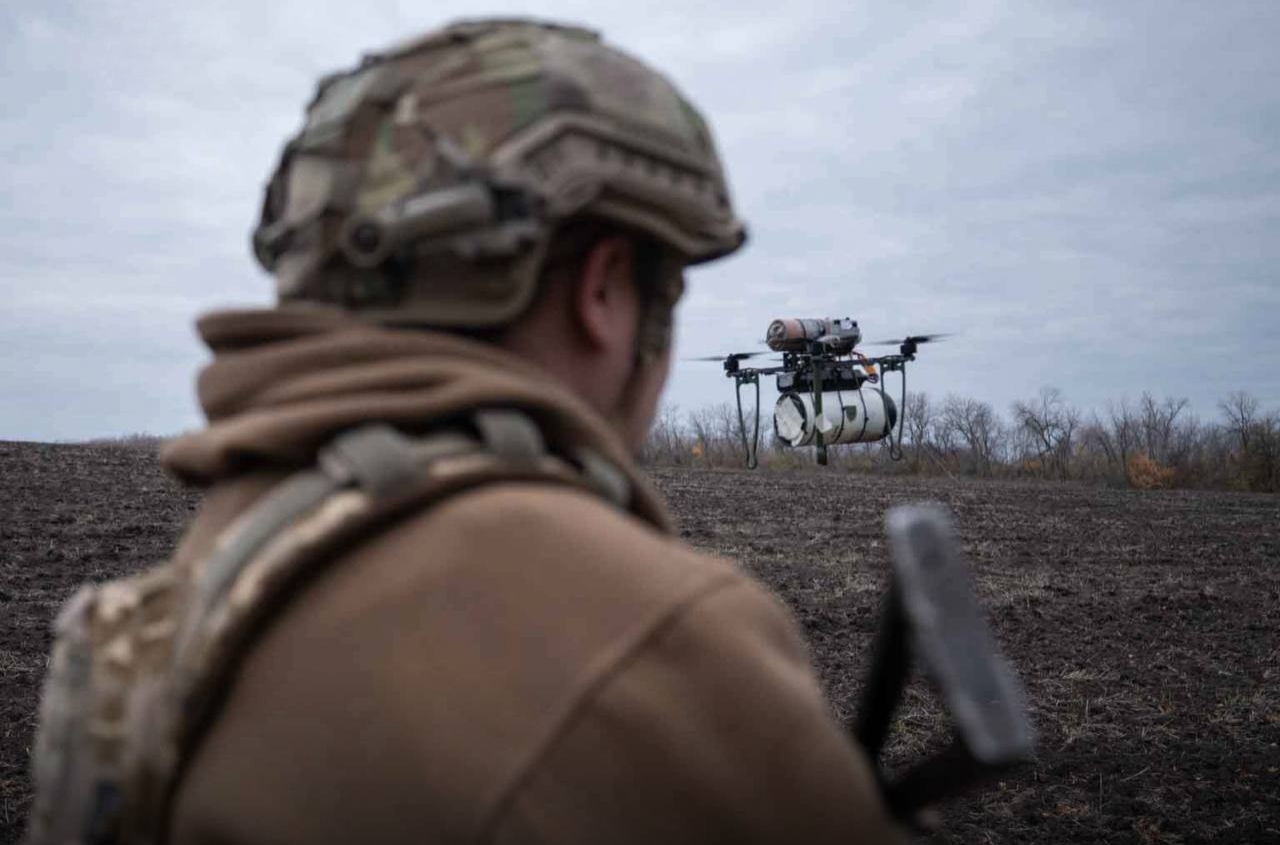Main image: President Donald Trump shakes hands with European Commission President Ursula von der Leyen in Turnberry, Scotland, on July 27. Andrew Harnik/Getty Images
Strangely enough, it is very difficult to detach from the details and look at the picture from a bird’s-eye view. Details are like a swamp—they drag you in, and the view through murky water is not always accurate.
If you strip away the husk of details, Putin has two cards on his table: nuclear blackmail and a tactical advantage in time. He plays by alternately pulling them out of his sleeve.
In the event of a full-scale confrontation with NATO, Russia has a chance to die along with the planet, but no chance to win. Any real war with the West without the use of strategic nuclear weapons would be guaranteed lost by Russia. It is important to clearly remember that it is not 1962 now, and that Russia is not the USSR (although the Kremlin tries to convince otherwise). The technological lag in key areas has long become critical. But here exceptions by space and time begin.
The first exception is spatial. The West has a complex center-periphery structure, and it is not entirely clear where the periphery that the “center” is ready to defend ends, and where the liminal (limitrophe) zone that it is ready to share begins. A significant part of the territory “reclaimed” from the Russian Empire after the USSR’s collapse has ended up in this gray zone. Ukraine became the first tragic example of what can happen in the “gray zone.” Now the focus is shifting to the Baltic region. That is, wherever the Western center is not ready to clearly and unequivocally say, “this is mine, and I will fight to the death for it,” Moscow holds an advantage today because the periphery cannot defend itself independently.
The second exception is temporal. The West, having become complacent before the “end of history,” lost quite a lot of time and failed its defense programs (except for America). But now the “widely closed eyes” have opened, especially after Trump lifted the veil for Europe (military budgets). Undoubtedly, in five or six years Europe will be a garden city in khaki colors, ready to bury any Russian ambition at the root. But until this garden grows, Moscow has a chance (within the liminal zone space).
These two exceptions define the Kremlin’s strategy. It knows it can inflict unacceptable damage on the Western periphery by acting quickly. Well, after that, of course, there will be a flood. However, as the poet wrote: “But, you see, that’s later...” This is precisely the concept Putin is currently selling to Trump, and this is exactly what Trump calls Putin’s “strong cards.” Meanwhile, neither Trump nor the West as a whole has yet settled on a response strategy. The calculation so far is that, weighing all risks, Putin will himself give up such a risky game. However, what grounds there are for such hopes is unclear. The cost of defeat in Ukraine far exceeds, for Putin, the price of the risk of expanding his expansion, so the temptation to embark on a new adventure may prove irresistible.
What realistic response strategies does the West have in this situation to close the “transit gray zone” and prevent further spread of Russian expansion into its periphery? The simplest answer would, of course, be a decision that the “center” will defend its most distant limitrophes with all available military power. The downside of this strategy is that Moscow must believe in such resolve, which is subjective and unpredictable.
An alternative is to resolve the problem through Ukraine, in two versions: either by reaching a compromise that would put the Russian military machine into “hibernation,” hoping that the Kremlin will not be able to quickly bring it out of this state again, or by supporting Ukraine’s ability to continue military operations at a sufficiently high level, which would physically prevent the Russian army from opening a “second front” in the Baltics (or elsewhere) without additional mobilization. The debate between Trump and the Europeans is currently about choosing between these two strategie





















